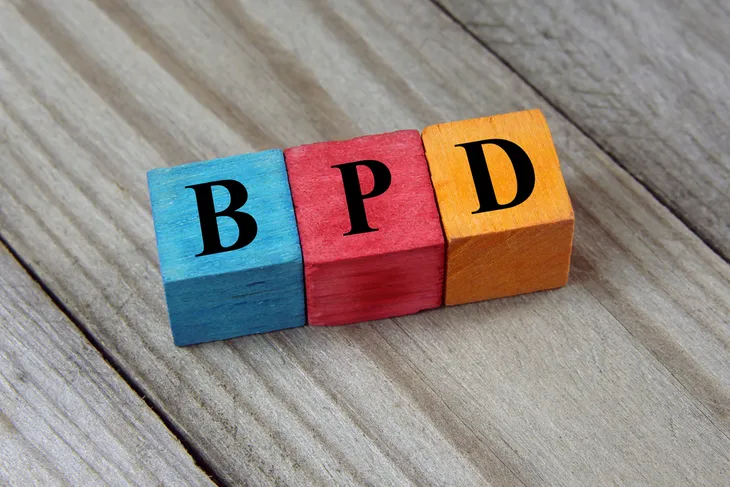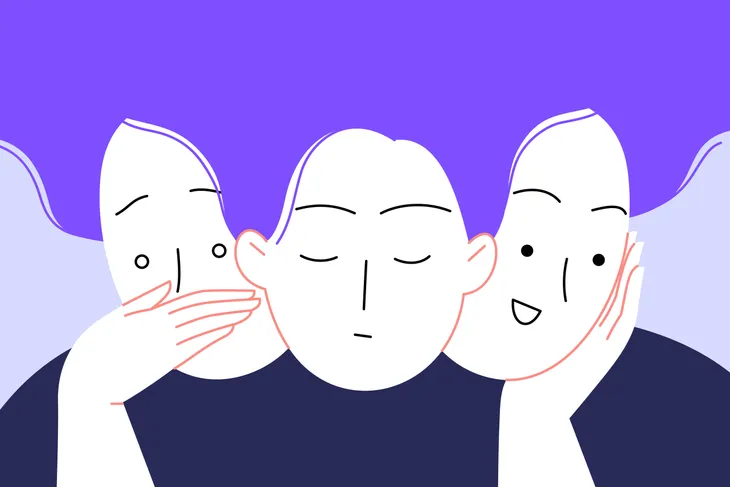- Borderline Personality Disorder is a mental health disorder that impacts the way the individual feels about themselves and others. They have difficulty regulating their emotions which can disrupt their everyday life.
- Common symptoms of BPD include fear of abandonment, relationship instability, periods of intense anxiousness and irritability, dissociative feelings, and a distorted self-image.
- Common types of BPD include impulsive BPD, discouraged BPD, self-destructive BPD, and petulant BPD.
- Thankfully medical science has developed several treatment options to help dull the symptoms and keep patients safe such as psychotherapy and prescribed medications.
The numbers estimate roughly 1.5-percent of the adult U.S. population experiences borderline personality disorder (BPD) with close to 75-percent of cases appearing in the female population.
The precise cause of BPD isn’t fully understood. It may be genetic, and it may be the product of environmental factors. Some believe that there are biological factors inhibiting the brain’s ability to regulate emotions. What science does know is what BPD looks like and offers a lot of ways to treat it. We’ll look at all of that right now.
What Is Borderline Personality Disorder?
BPD is about emotions. More specifically, difficulty regulating its ebbs and flows. Those that suffer from borderline personality disorder often experience emotions so intensely that they find it incredibly difficult to come back down to baseline.
BPD doesn’t just manifest internally either. This battle within makes way for a whole host of harmful responses and actions involving impulsivity, poor self-image, intense emotional reactions, and rocky relationships.
There are four types of BPD, each characterized by the way the person handles their emotions. A person can be diagnosed with more than one type, and that type may change with time. Read on to learn more about each type, as well as how BPD is typically treated.
Symptoms of Borderline Personality Disorder
As mentioned earlier, symptoms of borderline personality disorder can change. There are constants though. A fear of being abandoned is common, as is relationship instability. Patients may experience periods of intense anxiousness and irritability.
Other symptoms include dissociative feelings, long stretches of boredom, bouts of uncontrollable anger, a distorted self-image, and self-harming behavior. If you or a loved one is showing any of the signs and symptoms of borderline personality disorder, talk to your doctor or mental health provider.
Impulsive Borderline Personality Disorder
Impulsive behaviors are generally defined as poorly conceived actions that lack foresight and are often unnecessarily risky, and inappropriate to the situation. Impulsive decisions are associated with predominantly undesirable outcomes.
Impulsivity is common in the general population but particularly in those with borderline personality disorder. People suffering from this type of BPD may exhibit binging behaviors, act aggressively, or engage in risky and self-destructive behaviors.
Discouraged Borderline Personality Disorder
Also frequently referred to as “quiet BPD,” discouraged borderline personality disorder is largely driven by fear of abandonment. Experts call it quiet because most of the symptoms are expressed internally.
Instead of lashing out at those around them for instance, discouraged types tend to blame themselves for problems, engage in suicidal behavior, self-isolate, or feel alienated in groups. They are often high functioning, successful individuals making it much more difficult to spot compared to other BPD subtypes.
Self-Destructive Borderline Personality Disorder
Self-destructive borderline personality disorder is difficult to spot too, but that’s due to it sharing symptoms with other mental health conditions including bipolar disorder or manic episodes. Symptoms like a sudden increase in energy, feelings of euphoria, and sleeping less.
Self-destructive borderline personality disorder can present itself as substance abuse, risky activities with a lack of preparation, and self-harm. An intense feeling of self-loathing, depression, feelings of bitterness, unstable self-image, and unstable emotions are also symptoms of self-destructive BPD.
Petulant Borderline Personality Disorder
The word petulance usually describes a sulky, ill-tempered child. Replace the child part with a full-grown adult and you’re already on your way to understanding this final borderline personality disorder classification.
Petulant borderline personality disorder presents as irritability, impatience, stubbornness, passive-aggressiveness, and severe mood swings. Those that suffer from it are often unsatisfied with their relationships and are prone to act out in harmful, manipulative ways.
Treatment: Psychotherapy
Talk therapy is the primary treatment for borderline personality disorder. Treatment can vary, but the goals of treatment largely stay the same. Using a variety of different methods, therapists aim to teach patients how to manage uncomfortable emotions, reduce impulsiveness, and work on improving relationships.
Dialectical behavior therapy, schema-focused therapy, mentalization-based therapy, STEPPS treatment, and transference-focused psychotherapy have all displayed varying levels of success in treating borderline personality disorder.
Treatment: Anti-Anxiety Medication
There’s a bit of controversy surrounding the use of anti-anxiety medications to treat patients with borderline personality disorder. They may be used to address symptoms of anxiety in those with BPD, but it’s worth noting, there’s little evidence that anti-anxiety medications help treat the condition. And unfortunately, there is evidence that suggests they may make symptoms worse.
Whether anti-anxiety medications are right for you, will be a discussion with your doctor.
 novak.elcic / Shutterstock
novak.elcic / ShutterstockTreatment: Antidepressants
A lot goes into mapping out a borderline personality disorder treatment strategy with the use of medications. A lot depends on the symptoms, their severity, and the doctor. If the doctor seeks to use medications as a way to dampen symptoms then antidepressants may be on the table.
Antidepressants are used to help with sadness, anxiety, and emotional reactivity, though they don’t seem to affect anger or impulsivity.
Treatment: Antipsychotics
There are several types of antipsychotics that may also be prescribed to help treat BPD. Some antipsychotics have been shown to mitigate some of the symptoms associated with the disorder.
They may help reduce anxiety, paranoid thinking, anger, and impulsivity despite the fact that BPD doesn’t really share features with psychosis. They aren’t without their side effects though. Their long-term use has been linked to tardive dyskinesia, which can cause uncontrollable movements of the face, lips, tongue, fingers, and limbs.
Treatment: Mood Stabilizers
Knowing what you now know about borderline personality disorder, this one shouldn’t come as much of a surprise. BPD is predominantly a mood-affecting condition, which is why medications with mood-stabilizing properties are often the preferred choice.
Mood stabilizing medications treat BPD right at the source, emotion dysregulation. And they’re quite effective when used alongside psychotherapy.
Treatment: Hospitalization
There may be times in a person’s BPD journey when they require hospitalization. Inpatient treatment at a qualified psychiatric facility usually only occurs when there’s a real concern that the patient may be at risk of harming themself or someone else. Research has shown that long-term inpatient treatment for BPD isn’t particularly helpful. Instead, inpatient hospitalization remains relatively brief.
The goal is always to keep the patient safe. This is done so using a combination of individual or group psychotherapy and medications. Once the patient is stable, they will be fully or partially discharged to either a partial psychiatric hospital program or outpatient treatment.
The Takeaway
Borderline personality disorder is a volatile, pervasive, and sometimes dangerous mental health condition that, if left unchecked, has the power to uproot the life of the patient as well as their entire support system. It can be an incredibly serious issue that demands immediate professional support to avoid the worst outcomes.
Thankfully medical science has developed several treatments to help dull the symptoms and keep patients safe. Everyone is different, but some combination of psychotherapy and medications has been proven to be effective.
Consult a professional for advice on how to deal with borderline personality disorder yourself or aid a loved one in need.















